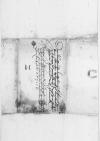List #5482
Ioannes DANTISCUS do Albrecht I von Hohenzollern-AnsbachAlthausen (Starogród), 1535-06-10
Rękopiśmienne podstawy źródłowe:
Pomocnicze podstawy źródłowe:
Publikacje:
| ||||||||||
Tekst + aparat krytyczny + komentarzZwykły tekstTekst + komentarzTekst + aparat krytyczny
Dem durchlauchten, hochgebornenn furstenn und herrnn, herrn
Durchlauchter, hochgebornerr furst, hochgeliebterr herr unnd freundt. / Mein freuntlich, willig dienst mit aller seligheit wunschung zuvorann.
Kegenwertigerr Ewer Durchlaucht bothe ist hie her mit Ewer Durchlaucht / cf.
Das ich aber so lange zceit Ewer Durchlaucht nicht geschribennn, / ist aus keiner unachtsamheit, / sunderr das ich disse tage herr von Ewer Durchlaucht weiter gesessenn / vorblibenn. / Bitt, mich in gunst wold entschuldigt habenn.
Es hoth mir mein
Von newenn zceitungenn weis ich dis mol wenig zu schreibenn. / Kan dannoch nicht underlossenn / disse alte, / mir von
Hie mitt thu ich mich in Ewer Durchlaucht gunst befhelennn Got den almechtigenn bittend, wold Ewer Durchlaucht sein gnad in langweriger gesuntheit und glukseliger regirung teglich mherenn und vorhaltenn.
Datum aus meimm slosse
[1 ] Grimm: frei im feld umherlaufendes, noch nicht eingespanntes pferd, auch das mutterpferd, dem wie seinem fohlen bewegungsfreiheit gegeben wird

